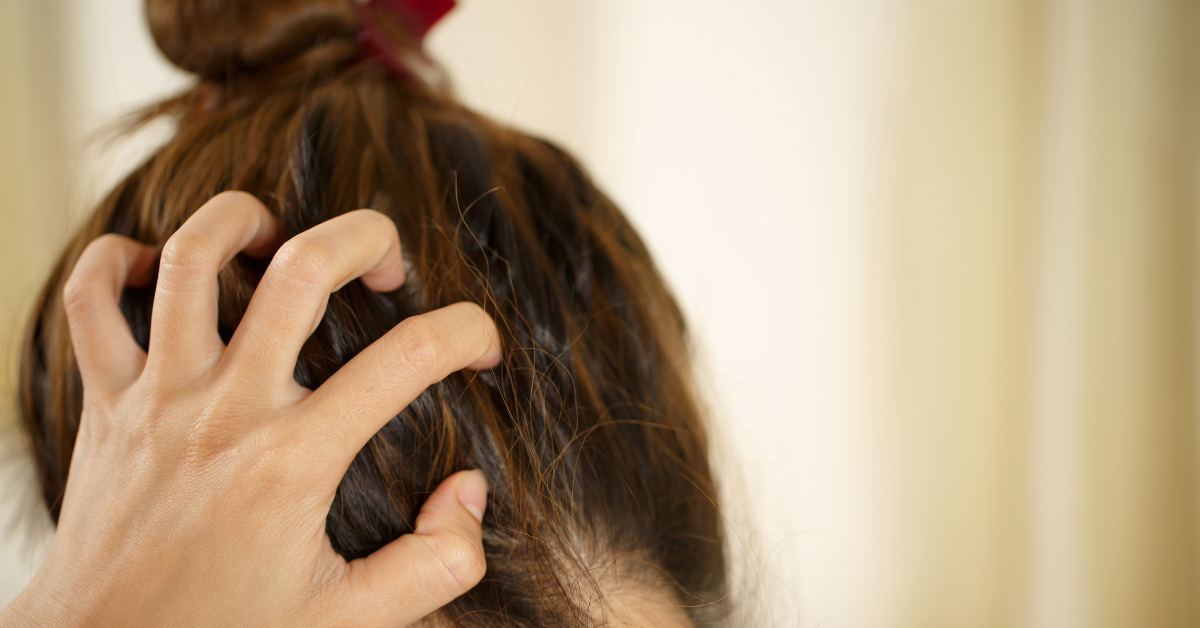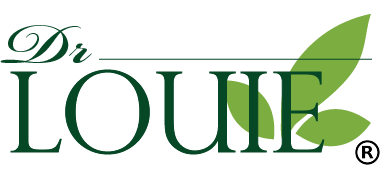
The Impact of Scalp Sebum on Thinning Hair and Hair Loss
|
Time to read 7 min


|
Time to read 7 min
When it comes to healthy hair, the role of sebum, the natural oil produced by your scalp, is often overlooked.
Sebum plays a crucial role in maintaining the health of your hair and scalp. However, an excess or deficiency of sebum can have a significant impact on hair thinning and hair loss.
In this blog, we'll explore the effects of sebum on thinning hair and hair loss, as well as strategies to mitigate these issues.
Sebum is an oily substance produced by the sebaceous glands in your scalp. It is also found on other areas of our body, including face, upper chest and back, genital area, and ear canals.
When it comes to your scalp and hair, it has several roles:
LUBRICATION
Sebum acts as a natural hair conditioner, lubricating the hair shaft. This lubrication keeps the hair soft, supple, and manageable, reducing friction between individual hair strands. It helps prevent tangling and breakage, contributing to overall hair health.
PROTECTION
Sebum forms a protective barrier on the scalp and hair. This barrier helps shield the skin and hair from external factors such as environmental pollutants, UV radiation, and harmful microorganisms. It serves as a natural defense mechanism against the elements, preventing potential damage.
MOISTURE REGULATION
Sebum helps regulate the moisture balance of the scalp and hair. It prevents excessive water loss from the skin and hair, which is especially crucial in dry or arid conditions. This moisture retention keeps the scalp and hair adequately hydrated.
ANTIMICROBIAL PROPERTIES
Sebum contains fatty acids and other substances that possess antimicrobial properties. These components help protect the scalp from harmful microorganisms, reducing the risk of infections or scalp conditions.
pH BALANCE
Sebum contributes to maintaining the pH balance of the scalp, which is typically slightly acidic. A balanced pH level is essential for a healthy scalp and hair, as it helps regulate the activity of beneficial microorganisms and minimizes the risk of issues like dandruff.
You may think that sebum is great and the more the better. But not necessarily. An excessive production of sebum can lead to oily hair and scalp, which may contribute to other issues like acne or clogged hair follicles. On the other hand, insufficient sebum production can result in dry hair and scalp, making the hair more prone to breakage and scalp conditions.
OILY, GREASY APPEARANCE
The most apparent sign of excessive sebum on the scalp is an oily, greasy appearance. Your hair may appear slick and shiny, often requiring frequent washing to maintain a clean look.
FLAT AND LIFELESS HAIR
Excess sebum can weigh down your hair, making it look flat and lifeless. This can affect your hairstyle and overall hair volume.
FOUL ODOUR
An accumulation of sebum can sometimes result in a foul odor, especially when bacteria feed on the excess oils. This odor can be embarrassing and unpleasant.
INFLAMMATORY CONDITIONS
Excess sebum can create an environment conducive to the overgrowth of yeast, specifically a type known as Malassezia. This yeast can lead to conditions like seborrheic dermatitis and dandruff. These conditions often involve redness, itching, and inflammation of the scalp, which can be uncomfortable and may cause further problems if left untreated.
HAIR LOSS & HAIR THINNING
While not all cases of excessive sebum lead to hair thinning and hair loss, in some instances, it can be a huge contributing factor. Here's how excessive sebum may be linked to hair issues:
a. Follicle Clogging: Excess sebum can accumulate on the scalp and hair, potentially clogging hair follicles. Clogged follicles can obstruct the natural growth of hair and lead to weakened, thinner hair strands.
b. Inflammation and Hair Miniaturization: Chronic inflammation on the scalp due to conditions like seborrheic dermatitis can disrupt the hair growth cycle. This can lead to a condition known as "miniaturization" in which hair follicles shrink and produce finer, shorter, and less robust hair strands. Over time, this can result in visible hair thinning.
c. Telogen Effluvium: Excessive sebum and the associated inflammation can trigger a hair shedding condition called telogen effluvium. This condition can lead to temporary hair loss and noticeable thinning.
Scary to think that something as “innocent” as excessive sebum on scalp can cause hair loss!!
But don't go washing your hair as soon as it gets a bit dirty! Because insufficient sebum on scalp can ALSO cause issues!
DRY AND BRITTLE HAIR
When there's a deficiency of sebum, your hair can become dry, brittle, and prone to breakage. This can make your hair appear thin and lifeless.
SCALP IRRITATION
Just like our skin, an insufficient amount of sebum can lead to scalp irritation and itchiness, which can be uncomfortable and contribute to hair loss.
HAIR BREAKAGE
Hair that lacks adequate moisture and lubrication may become dry, brittle, and more prone to breakage. This can result in shorter hair length and an overall appearance of thinning hair.
REDUCED HAIR ELASTICITY
Dry hair tends to have reduced elasticity, making it more vulnerable to damage and breakage. This can further contribute to the appearance of thinning hair.
Dryness
If your scalp feels dry, flaky, and lacks moisture, it may indicate insufficient sebum production. You may notice tightness and itching.
Dandruff
The presence of dandruff, characterized by white or yellowish flakes of dead skin on your scalp and hair, is a common sign of dryness and a lack of sebum.
Tightness and Irritation
A dry scalp often feels tight and may be prone to irritation, redness, or inflammation.
Brittle and Dry Hair
Hair that lacks sufficient sebum can become dry, brittle, and more prone to breakage. You may notice that your hair feels rough and lacks shine.
Reduced Hair Elasticity
Dry hair can exhibit reduced elasticity, meaning it doesn't stretch as well as healthy, well-moisturized hair. This can lead to breakage and hair damage.
Greasy Appearance
An oily scalp will often appear greasy, shiny, and oily. You may find that your hair looks oily shortly after washing.
Flat and Limp Hair
Excess sebum can weigh down your hair, making it look flat and lifeless. It may lack volume and body.
Frequent Washing
If you find yourself needing to wash your hair more often than usual to combat excessive oiliness, it may be a sign of overactive sebaceous glands.
Acne on Scalp
An oily scalp can lead to the development of scalp acne, with red, inflamed, and sometimes painful bumps on the scalp.
Itchiness and Odor
An excessively oily scalp can sometimes result in itchiness and an unpleasant odor, especially when bacteria feed on the excess sebum.
Mitigating sebum-related hair loss and thinning hair involves a combination of proper hair care practices and lifestyle adjustments to address the underlying causes. Here are some steps you can take to help reduce the impact of excessive or insufficient sebum on your hair:
Regular Washing
Wash your hair and scalp regularly to remove excess sebum, dirt, and debris. Use a gentle, sulfate-free shampoo designed for oily hair. DrLOUIE Daily Shampoo is perfect for this, as it is a sulfate-free, pH-balanced shampoo that effectively removes sebum while leaving moisture barrier intact.
Balanced Diet
Eat a well-balanced diet with essential nutrients, including vitamins, antioxidants, and omega-3 fatty acids, to help regulate sebum production.
Use a Clarifying Shampoo
Consider using a clarifying shampoo occasionally to help control sebum production and maintain a clean scalp.
Limit Heat Styling
Excessive heat styling can stimulate sebum production. Minimize the use of heated styling tools and opt for heat-protectant products when necessary.
Scalp Massages
Gently massage your scalp to stimulate blood flow and distribute sebum more evenly, promoting a healthier scalp. You can find out how to do a scalp massage to minimize hair loss and thinning hair by clicking here.
Consult a Dermatologist
If you have severe issues related to excessive sebum and are experiencing hair loss or thinning, consult a dermatologist for personalized treatments and recommendations.
Moisturizing Shampoo and Conditioner
Use moisturizing and hydrating shampoos and conditioners to alleviate dryness and maintain a healthy scalp. DrLOUIE Daily Shampoo is a sulfate-free, pH-balanced gentle cleanser. To hydrate and moisturize the scalp, you can use DrLOUIE Hair Treatment. YES, YOU CAN USE DrLOUIE CONDITIONER ON YOUR SCALP + HAIR!
Avoid Overwashing
Do not overwash your hair, as excessive washing can strip the scalp of natural oils, making dryness worse. Wash your hair as needed but not too frequently. Generally once a day is recommended.
Use a Humidifier
Adding moisture to the air in your home with a humidifier can help prevent excessive scalp dryness, especially in dry or arid environments.
Balanced Diet
Consume a diet rich in vitamins, antioxidants, and omega-3 fatty acids to support scalp and hair health.
Consult a Dermatologist
If you have a persistently dry scalp and are experiencing hair loss or thinning, consult a dermatologist for an accurate diagnosis and tailored treatment options.
Avoid Harsh Hair Products
Use mild, sulfate-free hair products, like our Daily Shampoo and Hair Treatment to avoid causing additional damage to your hair and scalp.
Manage Stress
Chronic stress can contribute to hair issues. Practice stress-reduction techniques such as mindfulness, meditation, and exercise to support overall well-being.
Stay Hydrated
Drinking an adequate amount of water can help maintain scalp and hair hydration.
Gentle Hair Handling
Be gentle when handling your hair, especially when wet, to minimize breakage and hair damage.